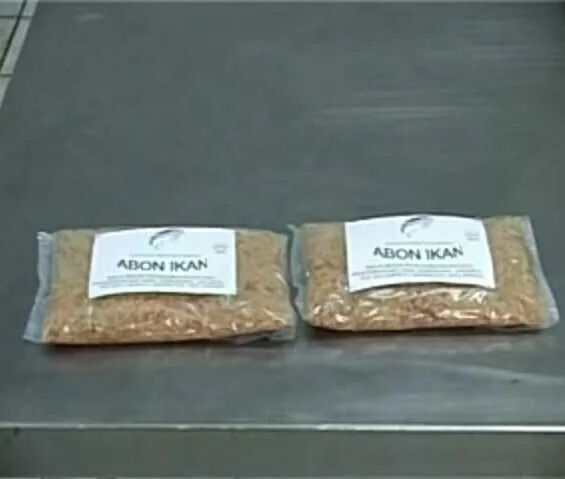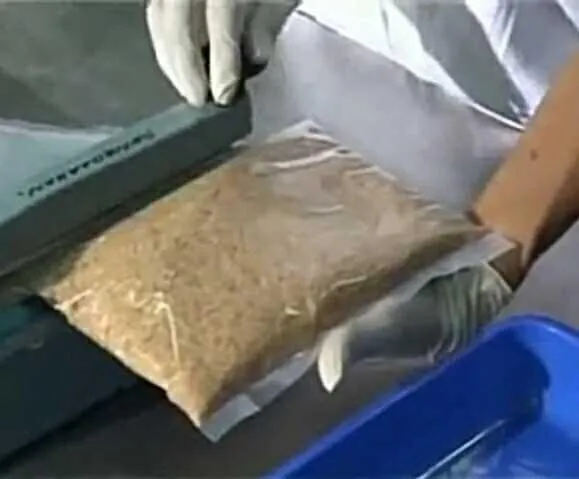ABON FISH: HIGH-FISHED FISHING PROCESSING PRODUCTS
Isliyana
Lhokseumawe State Polytechnic
Undergraduate Program Applied Industrial Chemical Technology
Email: isliana28@gmail.com
Abstract
This paper aims to examine the abon of fish as a highly nutritious and quality nutritious processed product favored by the consument. The steaming temperature in the process of making fish abon greatly affect the nutritional and organoleptic content of the product. The results of previous research indicate that the boiling duration for 60 minutes with a frying pan for 30 minutes is a good treatment to produce the color and taste of abon most preferred by consumers. Fish as a food source of protein that can be used as an alternative source of protein problem solving Protein Energy (PEM). The quality of product quality is very influential on the packaging and raw materials or fish used.
Keywords: Fish Abon, Nutrition Content, Organoleptic
INTRODUCTION
Fish is one of the popular food ingredients consumed by the community and has a good nutritional value for health. In general, fish more quickly decompose when compared with other foods. If in the open if not dawetkan or processed bacteria and chemical changes in dead fish causing decay, therefore it takes preservation technology or processed fish that can extend the shelf life, such as by processing fish into fish abon. One of the weaknesses of fishery products is its high water content (Nugraheni 2016). Processing is one way to extend the shelf life and quality of a food. Using a good processing process will certainly produce a good product as well. However, of the many types of processing, processing to produce a product so as to minimize the level of loss or decrease in nutrient content contained by fish after processing, so that the nutrients contained in the material can still be maintained.
Abon is one of the traditional processed form that has been widely known to people who use raw materials from beef and chicken meat and now started to develop abon using fish raw materials are relatively cheaper as the development of products that produce economic value-added.
Abon processing of this fish is a combination of heating and drying process in which fish cooked by frying until the water content is very low, so the abon has a long lasting power even kept at room temperature. The resulting product has a soft texture, good taste, distinctive odor and has a long lasting power (Warintek, 2014). Based on the results of several studies indicating that the boiling duration for 60 minutes with a frying pan for 30 minutes is a good treatment to produce the color and taste of abon most preferred by consumers. The addition of fibrous material to the abon in addition to giving the fibrous texture of the abon, increasing the color and volume of the abon also have an impact on health (Hardoko, et al 2015). Expected to produce fish abon with nutritious quality and shelf life longer. This article aims to study the method of making fish based abon and method of determining shelf life of abon packed with plastic. Abon quality is also studied based on organoleptic test results.

Product Saving Age Determination
Saving age is one of the requirements that must be met before marketed food products other than safe products consumed by the community. Food processing in commercial industry generally aims to extend the shelf life, change or improve the characteristics of the product (color, taste, texture), facilitate the handling and distribution, memmberikan more choices and variety of food products in the market, increase the economic value of raw materials, and maintain or improve the quality of nutrition.
Determination of shelf life and sensory parameters is very important at the stage of research and development of new food products. On a large industrial scale or commercial, the shelf life is determined based on the results of the dilaboratorium analysis supported by the evaluation of the distribution of the field. Factors that greatly affect the decline in the quality of food products are the water content in the product, the growth of bacteria, fungi, and other microbes. The higher the water content in general many bacteria will grow.
Factors affecting abon quality standards include:
Water content, affect the shelf life and durability abon.
Ash content, decreasing the degree of acceptance from consumers.
Protein levels, as an indicator of some amount of meat / fish used for abon.
Fat content, associated with the raw materials used, whether or not to use cooking oil in the frying pan
.
Organoleptic properties
In the thermal process there may be changes in the organoleptic properties of the product. Changes in organoleptic properties are an accumulation of various changes that occur during processes such as protein denaturation, melting, fat restructuring as well as starch gelatinization. Such changes in macromolecular components cause changes in the texture and taste of the product. Other changes that occur such as color and flavor changes also contribute to the organoleptic properties of the product. In addition, the reactions that occur during the thermal process, ie chemical reactions in heat-induced food such as maillard reaction and caramelization also contribute to the taste of the product. The intensity of the changes that occur depends on the length and temperature of the heating process. In the process of overheating can occur a reaction that results in overcooked or overcooked taste that consumers do not like (Estiyasih and Ahmadi, 2009).
Color is the first impression the panelists capture before recognizing other stimuli. Color is very important for every food so an attractive color will affect consumer acceptance. In addition, color can also provide clues about the occurrence of chemical changes in foods such as browning and caramelization. The color change in processing such as frying is caused by maillard reaction, in this reaction, reaction occurs between amino acid and reducing sugar.



The main factor that ultimately affects the acceptance of the food is the stimulation of the flavor generated by the food so it is very important for the assessment of taste towards consumer acceptance. Pain is an important factor in deciding for consumers to accept or reject a food product. Although other parameters are of good value, if the taste is unpalatable or disliked, the product will be rejected or not received.
The aromas that are produced from many foods determine the delicacy of the food. The food industry considers it very important to do the aroma test because it can quickly give the results of its production rating favored or disliked (Soekarto, 1985). In the warming treatment will cause changes in texture, taste and nutritional value. Softening of texture and loss of tissue / cell integrity as a result of damage from heating so that the chemicals in the material will react and cause the color change, flavor and nutritional value. Flavoring changes caused by lack of taste. 31 Texture is a sensation associated with touch or touch. Sometimes the texture is also considered as important as the smell, taste and aroma as it affects the image of the food. The most important texture in soft and crunchy foods. The most commonly recognized features are violence, cohesiveness, and water content. What is meant by texture is the smoothness of an incision when touched with a finger.




CONCLUSION
Factors that greatly affect the decline in the quality of food products are the water content in the product, the growth of bacteria, fungi, and other microbes. The higher the water content in general many bacteria will grow. The quality of product quality is very influential on the packaging and raw materials or fish used. Steaming temperatures in the process of making fish abon also greatly affect the nutritional and organoleptic content. Characteristics of the best fish shreds must meet industry standards for both chemical and organoleptic parameters.